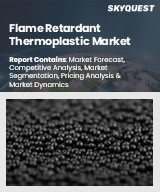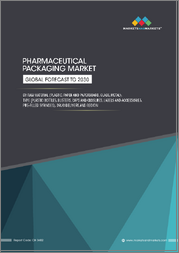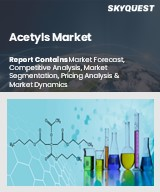
|
시장보고서
상품코드
1639410
인도네시아의 플라스틱 시장 : 점유율 분석, 산업 동향, 성장 예측(2025-2030년)Indonesia Plastics - Market Share Analysis, Industry Trends & Statistics, Growth Forecasts (2025 - 2030) |
||||||
인도네시아의 플라스틱 시장 규모는 2025년에 736만 톤으로 추정됩니다. 예측기간(2025-2030년)의 CAGR은 4.5%를 넘어 2030년에는 917만 톤에 달할 것으로 예상됩니다.

COVID-19의 대유행은 사슬 국가의 이 나라의 플라스틱 생산과 공급에 부정적인 영향을 미쳤습니다. 그러나 유행기간 동안 온라인 식품 및 소매 전자상거래 서비스 이용이 증가함에 따라 포장 부문 수요가 급증했습니다. 2020년 이후 국내 지속적인 활동으로 시장이 꾸준히 개선되었습니다.
주요 하이라이트
- 중기적으로는 포장, 전기 및 전자, 건설산업 등의 최종사용자 산업에서의 수요 증가와 다운스트림 처리 용량 추가의 급증이 조사 대상 시장의 성장을 견인할 것으로 예상됩니다.
- 그러나 플라스틱 사용에 대한 정부의 규제와 원료 수입에 대한 과도한 의존은 조사한 시장의 성장을 방해하는 주요 요인입니다.
- 친환경 제품에 대한 수요 증가는 조사 대상 시장의 성장에 다양한 기회를 제공할 것으로 기대됩니다.
인도네시아의 플라스틱 시장 동향
포장 산업에서의 수요 증가
- 플라스틱의 주요 용도는 내마모성, 내약품성, 성형 용이성, 재활용성, 내천공성, 기계적 강도의 높이에서 포장 부문입니다. 또한 폴리에틸렌 테레프탈레이트(PET)는 인도네시아에서 가장 흔한 포장용 플라스틱입니다.
- 플라스틱은 휴대성, 디자인의 유연성, 세척 용이성, 경량성 등과 함께 다른 재료보다 습기로부터 보호되는 등의 특성으로 식품, 소매, 의약품의 부문으로 상품 포장에 자주 사용되고 있습니다 합니다. 또한 취급 위험이 낮고 독성이 낮고 비스페놀 A(BPA)나 중금속을 포함하지 않는 것도 PET가 식품 포장에 사용되는 요인이 되고 있습니다.
- 제약 산업에서 플라스틱은 혈액백, 주사기, 분무기, 약병 포장에 자주 사용됩니다. 게다가 인도네시아에서는 인구가 증가하고 있는 것이 의약품 개발의 주요 이유가 되고 있어 이것이 이 나라에서의 플라스틱 소비를 증가시키고 있습니다.
- 인도네시아에서는 전자상거래 산업에서 제품 포장에 플라스틱을 사용하는 경우가 늘고 있습니다. 예를 들어 캐나다 농업 및 농업 식품부에 따르면 인도네시아의 소매 전자상거래 판매액은 2022년 480억 7,000만 달러로 평가되었습니다. 2026년에는 904억 7,000만 달러에 달할 것으로 예측됩니다.
- 미국 농무부에 따르면 인도네시아의 포장 식품 소매 판매액은 2022년에 2022년에 375억 달러에 이르렀고 2021년 334억 달러에 비해 성장세를 기록했습니다. 국내 식품 포장의 플라스틱 소비 증가를 보여주는 이러한 동향은 앞으로도 계속될 것으로 예상됩니다.
- 플라스틱 재료는 내구성, 유연성, 의약품의 무결성을 유지하는 능력 등의 품질을 제공하며 의약품 포장에 중요한 역할을 합니다. 플라스틱 병, 물집 팩, 바이알은 그 대표적인 예입니다.
- 플라스틱은 효과적인 장벽 특성, 유연성, 경량성, 비용 효과, 투명성, 신뢰성 기능 및 지속적인 혁신으로 무균 포장에 일반적으로 선택됩니다. 그러나 플라스틱 폐기물과 관련된 환경 문제를 해결하기 위해 지속 가능한 대체품의 개발에 점점 더 많은 주목을 받고 있습니다.
- 플라스틱 산업을 강화하는 움직임으로 무균 포장을 위한 최고 품질의 제품과 솔루션을 제공하는 유명한 리더인 Lamipak은 2022년 5월 인도네시아에 제2공장을 건설할 계획을 밝혀 1억 6,000만 달러의 엄청난 투자를 보여주었습니다.
- 상기 요인은 예측 기간 동안 인도네시아의 플라스틱 수요에 상당한 영향을 미칠 것으로 예상됩니다.
사출 성형 기술이 시장을 독점
- 사출 성형 기술은 열가소성 중합체를 융점 이상으로 가열하여 저점도의 용융 상태로 만듭니다. 그 후, 이 용융 플라스틱을 원하는 형태의 금형에 밀어 넣고 사출하여 원하는 제품을 얻는다.
- 사출 성형 기술은 열가소성 폴리머를 사용하여 헬멧, 병 캡, 선풍기와 같은 간단한 플라스틱과 복잡한 플라스틱의 형태를 만드는 데 사용됩니다. 또한 전선의 절연, 병, 화장품 포장에도 사용됩니다.
- 사출 성형은 고품질의 가공 수지를 사용하여 수행됩니다. 설계 유연성, 비용 효과, 신속한 제조 공정, 낮은 인건비, 합리적인 색상 관리, 좋은 제품 품질 등 몇 가지 장점이 있습니다. 또한,이 공정은 대부분 자본을 소비하지만 다른 기술 유형보다 뛰어난 더 정확한 제품을 설명합니다.
- 사출성형은 비이커, 검사관, 캡, 씰, 클로저, 밸브, 주사기, 흡입기 등 다양한 의료기기 부품의 제조에 이용되고 있기 때문에 제약산업 수요가 증가하고 있습니다. 또한 유엔의 컴트라드에 따르면 인도네시아는 2022년 수입 의약품에 약 15억 1,000만 달러를 지출했습니다. 이 추세는 의약품 부문에서 사출 성형 기술의 미래 잠재력을 보여줍니다.
- 사출 성형은 도어 패널, 범퍼, 그릴, 라이트 하우징, 펜더 등 자동차 부품의 제조에 널리 사용됩니다. 국제자동차 건설기구(OICA)에 따르면 인도네시아는 2022년 약 121만대의 자동차를 생산해 전년 대비 37.5%의 성장률을 기록했습니다.
- 게다가 플라스틱은 케이스, 인클로저, 부품, 커넥터의 가볍고 내구성이 있는 소재, 배선이나 회로 기판의 절연재, 프린트 기판(PCB)의 생산, 포장, 디스플레이나 스크린, 시제품의 3D 프린팅, 전자 부품의 손상을 방지하는 정전기 방지 특성 제공 등 전자 제품 산업에서 중요한 역할을 하고 있습니다.
- 산업성에 따르면 인도네시아의 전자 제품 제조업 투자액은 2022년 7조 5,000억 루피아(4억 8,000만 달러)에 달할 전망입니다.
- 위의 요인으로부터 조사 대상 시장은 예측 기간 동안 안정적인 성장이 예상됩니다.
인도네시아의 플라스틱 산업 개요
인도네시아의 플라스틱 시장은 통합되어 있습니다. 이 시장의 주요 기업에는 BASF SE, PT LOTTE CHEMICAL TITAN Tbk, PTT Global Chemical Public Company Limited, PT Polychem Indonesia Tbk, TORAY INDUSTRIES INC. 등이 있습니다.
기타 혜택
- 엑셀 형식 시장 예측(ME) 시트
- 3개월간의 애널리스트 서포트
목차
제1장 서론
- 조사의 전제조건
- 조사 범위
제2장 조사 방법
제3장 주요 요약
제4장 시장 역학
- 성장 촉진요인
- 최종 사용자 산업에서의 수요 증가
- 다운스트림 처리 능력 증강의 급증
- 기타 촉진요인
- 억제요인
- 원료 수입에 과도하게 의존
- 플라스틱의 사용에 관한 정부의 규제
- 산업 밸류체인 분석
- Porter's Five Forces 분석
- 공급기업의 협상력
- 구매자의 협상력
- 신규 진입업자의 위협
- 대체품의 위협
- 경쟁도
제5장 시장 세분화(규모별)
- 유형
- 종래의 플라스틱
- 폴리에틸렌
- 폴리프로필렌
- 폴리염화비닐
- 폴리스티렌
- 엔지니어링 플라스틱
- 폴리에틸렌 테레프탈레이트(PET)
- 폴리부틸렌 테레프탈레이트(PBT)
- 폴리카보네이트(PC)
- 스티렌 폴리머(ABS&SAN)
- 불소수지
- 폴리옥시메틸렌(POM)
- 폴리메틸 메타크릴레이트(PMMA)
- 폴리아미드(PA)
- 기타 엔지니어링 플라스틱(액정 폴리머, 폴리에테르 에테르케톤)
- 바이오플라스틱
- 종래의 플라스틱
- 성형 기술
- 사출 성형
- 압출 성형
- 블로우 성형
- 기타
- 용도
- 포장
- 전기 및 전자
- 건축 및 건설
- 자동차 및 운송
- 가구 및 침구
- 기타 용도(가정용품)
제6장 경쟁 구도
- 인수합병, 합작사업, 제휴, 협정
- 시장 점유율(%)**/랭킹 분석
- 주요 기업의 전략
- 기업 프로파일
- Asahimas Chemical Company
- BASF SE
- LOTTE CHEMICAL TITAN HOLDING BERHAD.
- PT. INNAN
- PT Pertamina(Persero)
- PT Polychem Indonesia Tbk
- PT Chandra Asri Petrochemical
- LyondellBasell Industries Holdings BV
- PT. Standard Toyo Polymer(Tosoh Corporation)
- Sulfindo Adiusaha
- PTT Global Chemical Public Company Limited
- PT Solvay Chemicals Indonesia
- PT Toray International Indonesia
제7장 시장 기회와 앞으로의 동향
- 친환경 제품에 대한 수요 증가
- 기타 기회
The Indonesia Plastics Market size is estimated at 7.36 million tons in 2025, and is expected to reach 9.17 million tons by 2030, at a CAGR of greater than 4.5% during the forecast period (2025-2030).

The COVID-19 pandemic negatively impacted the country's production and supply of plastics during the lockdown. However, the demand from the packaging segment surged due to the increasing use of online food and retail e-commerce services during the pandemic. After 2020, the market improved steadily due to continuous activities within the country.
Key Highlights
- Over the medium term, growing demand from the end-user industries, such as packaging, electrical, and electronics, as well as the construction industry, along with the rapid increase in the downstream processing capacity additions, is expected to drive the growth of the market studied.
- However, government regulations on the use of plastics and over-reliance on the imports of raw materials are the primary factors hindering the growth of the market studied.
- Nevertheless, the rising demand for eco-friendly products is expected to offer various opportunities for the growth of the market studied.
Indonesia Plastics Market Trends
Growing Demand from the Packaging Industry
- The primary utilization of plastics is in the packaging segment due to better wear and chemical resistance, ease of molding, recyclability, puncture resistance, and high mechanical strength. Furthermore, polyethylene terephthalate (PET) is Indonesia's most common plastic used for packaging purposes.
- Plastics are more commonly used in the food, retail, and pharmaceutical sectors for packaging goods due to their properties, such as portability, design flexibility, ease of cleaning, lightweight, and protection against moisture over other materials. In addition, low handling hazards, low toxicity, and the absence of bisphenol A (BPA) and heavy metals are other factors that allow PET to be used for food packaging.
- In the pharmaceutical industry, plastics are commonly used for packaging blood bags, syringes, nebulizers, and medicine bottles. Furthermore, the growing population in Indonesia is the main reason for pharmaceutical development, which has increased the consumption of plastics within the country.
- In Indonesia, the use of plastics for packaging goods is increasing in the e-commerce industry. For instance, according to Agriculture and Agri-Food Canada, the sales value of retail e-commerce in Indonesia was valued at USD 48.07 billion in 2022. It is forecasted to reach USD 90.47 billion in 2026.
- According to the United States Department of Agriculture, the retail sales value of packaged foods in Indonesia reached USD 37. 5 billion in 2022 and registered growth when compared to USD 33.4 billion in 2021. This trend, which shows the growing consumption of plastics in food packaging within the country, is expected to continue.
- Plastic materials play a crucial role in pharmaceutical packaging, offering qualities such as durability, flexibility, and the ability to maintain the integrity of medicines. Plastic bottles, blister packs, and vials are common examples.
- Plastic is commonly chosen for aseptic packaging due to its effective barrier properties, flexibility, lightweight nature, cost-effectiveness, transparency, reliability features, and ongoing innovations. However, there is an increased focus on developing sustainable alternatives to address environmental concerns associated with plastic waste.
- In a move to bolster the plastic industry, Lamipak, a prominent leader in delivering top-quality products and solutions for aseptic packaging, revealed its plans to build a second factory in Indonesia in May 2022, demonstrating a substantial investment of USD 160 million.
- The factors mentioned above are expected to have a considerable impact on Inodnesia's demand for plastic during the forecast period.
Injection Molding Technology to Dominate the Market
- In injection molding technology, the thermoplastic polymer is heated above its melting point and converted into a molten form of low viscosity. This molten plastic is then forced and injected into a mold of the desired shape to get the desired product.
- Injection molding technology is used to make the shape of simple or complex plastics such as helmets, bottle caps, and fans using thermoplastic polymers. It is also used for wire insulation, bottles, and cosmetics packaging.
- Injection molding is done using high-quality processing resins. It has several advantages: design flexibility, cost-effectiveness, fast manufacturing process, low labor costs, reasonable color control, and good product quality. In addition, this process is mostly capital-consuming, but it offers better and more accurate products than other technology types.
- The pharmaceutical industry's demand for injection molding is increasing since it is utilized to manufacture various medical equipment parts such as beakers, test tubes, caps, seals, closures, valves, syringes, and inhalers. Furthermore, according to the UN Comtrade, Indonesia spent approximately USD 1.51 billion on imported pharmaceutical products in 2022. This trend demonstrates future opportunities for injection molding technology in the pharmaceutical sector.
- Injection molding is more extensively used in the manufacturing of automotive parts such as door panels, bumpers, grilles, light housings, fenders, and other parts. According to the Organisation Internationale des Constructeurs d'Automobiles (OICA), Indonesia produced around 1.21 million units of vehicles in 2022, witnessing a growth rate of 37.5% as compared to the previous year.
- Furthermore, plastics play a crucial role in the electronics industry, serving as lightweight and durable materials for casings, enclosures, components, and connectors, providing insulation for wiring and circuit boards, contributing to the production of printed circuit boards (PCBs), facilitating packaging, creating displays and screens, enabling 3D printing of prototypes, and offering antistatic properties to prevent damage to electronic components.
- According to the Ministry of Industry, the investment value of the electronics manufacturing industry in Indonesia reached IDR 7.5 trillion (USD 0.48 billion) in 2022.
- Due to the factors mentioned above, the market studied is expected to have steady growth during the forecast period.
Indonesia Plastics Industry Overview
The Indonesian plastics market is consolidated. Some major players in the market (not in any particular order) include BASF SE, PT LOTTE CHEMICAL TITAN Tbk, PTT Global Chemical Public Company Limited, PT Polychem Indonesia Tbk, and TORAY INDUSTRIES INC., among others.
Additional Benefits:
- The market estimate (ME) sheet in Excel format
- 3 months of analyst support
TABLE OF CONTENTS
1 INTRODUCTION
- 1.1 Study Assumptions
- 1.2 Scope of the Study
2 RESEARCH METHODOLOGY
3 EXECUTIVE SUMMARY
4 MARKET DYNAMICS
- 4.1 Drivers
- 4.1.1 Growing Demand from the End-user Industries
- 4.1.2 Rapid Increase in the Downstream Processing Capacity Additions
- 4.1.3 Other Drivers
- 4.2 Restraints
- 4.2.1 Over-reliance on the Imports of Raw Materials
- 4.2.2 Government Regulations on the Use of Plastics
- 4.3 Industry Value Chain Analysis
- 4.4 Porter's Five Forces Analysis
- 4.4.1 Bargaining Power of Suppliers
- 4.4.2 Bargaining Power of Buyers
- 4.4.3 Threat of New Entrants
- 4.4.4 Threat of Substitute Products and Services
- 4.4.5 Degree of Competition
5 MARKET SEGMENTATION (Market Size by Volume)
- 5.1 Type
- 5.1.1 Traditional Plastics
- 5.1.1.1 Polyethylene
- 5.1.1.2 Polypropylene
- 5.1.1.3 Polyvinyl Chloride
- 5.1.1.4 Polystyrene
- 5.1.2 Engineering Plastics
- 5.1.2.1 Polyethylene Terephthalate (PET)
- 5.1.2.2 Polybutylene Terephthalate (PBT)
- 5.1.2.3 Polycarbonates(PC)
- 5.1.2.4 Styrene Polymers (ABS & SAN)
- 5.1.2.5 Fluoropolymers
- 5.1.2.6 Polyoxymethylene (POM)
- 5.1.2.7 Polymethyl Methacrylate (PMMA)
- 5.1.2.8 Polyamide (PA)
- 5.1.2.9 Other Engineering Plastics (Liquid Crystal Polymer, Polyether Ether Ketone)
- 5.1.3 Bioplastics
- 5.1.1 Traditional Plastics
- 5.2 Technology
- 5.2.1 Injection Molding
- 5.2.2 Extrusion Molding
- 5.2.3 Blow Molding
- 5.2.4 Other Technologies
- 5.3 Application
- 5.3.1 Packaging
- 5.3.2 Electrical and Electronics
- 5.3.3 Building and Construction
- 5.3.4 Automotive and Transportation
- 5.3.5 Furniture and Bedding
- 5.3.6 Other Applications (Houseware)
6 COMPETITIVE LANDSCAPE
- 6.1 Mergers and Acquisitions, Joint Ventures, Collaborations, and Agreements
- 6.2 Market Share (%)**/Ranking Analysis
- 6.3 Strategies Adopted by Leading Players
- 6.4 Company Profiles
- 6.4.1 Asahimas Chemical Company
- 6.4.2 BASF SE
- 6.4.3 LOTTE CHEMICAL TITAN HOLDING BERHAD.
- 6.4.4 PT. INNAN
- 6.4.5 PT Pertamina(Persero)
- 6.4.6 PT Polychem Indonesia Tbk
- 6.4.7 PT Chandra Asri Petrochemical
- 6.4.8 LyondellBasell Industries Holdings BV
- 6.4.9 PT. Standard Toyo Polymer (Tosoh Corporation)
- 6.4.10 Sulfindo Adiusaha
- 6.4.11 PTT Global Chemical Public Company Limited
- 6.4.12 P.T. Solvay Chemicals Indonesia
- 6.4.13 P.T. Toray International Indonesia
7 MARKET OPPORTUNITIES AND FUTURE TRENDS
- 7.1 Rising demand for Eco-friendly Products
- 7.2 Other Opportunities



















